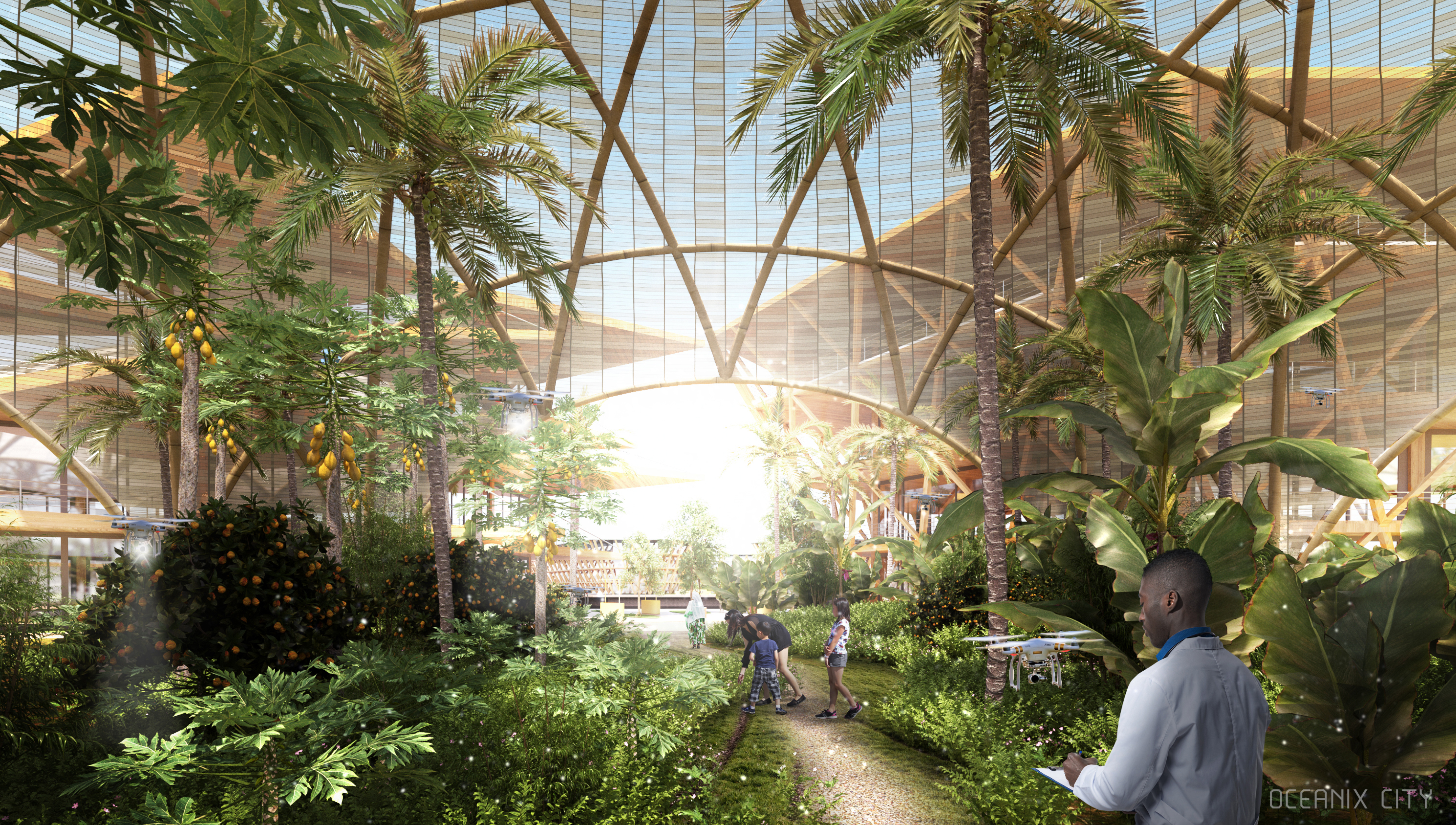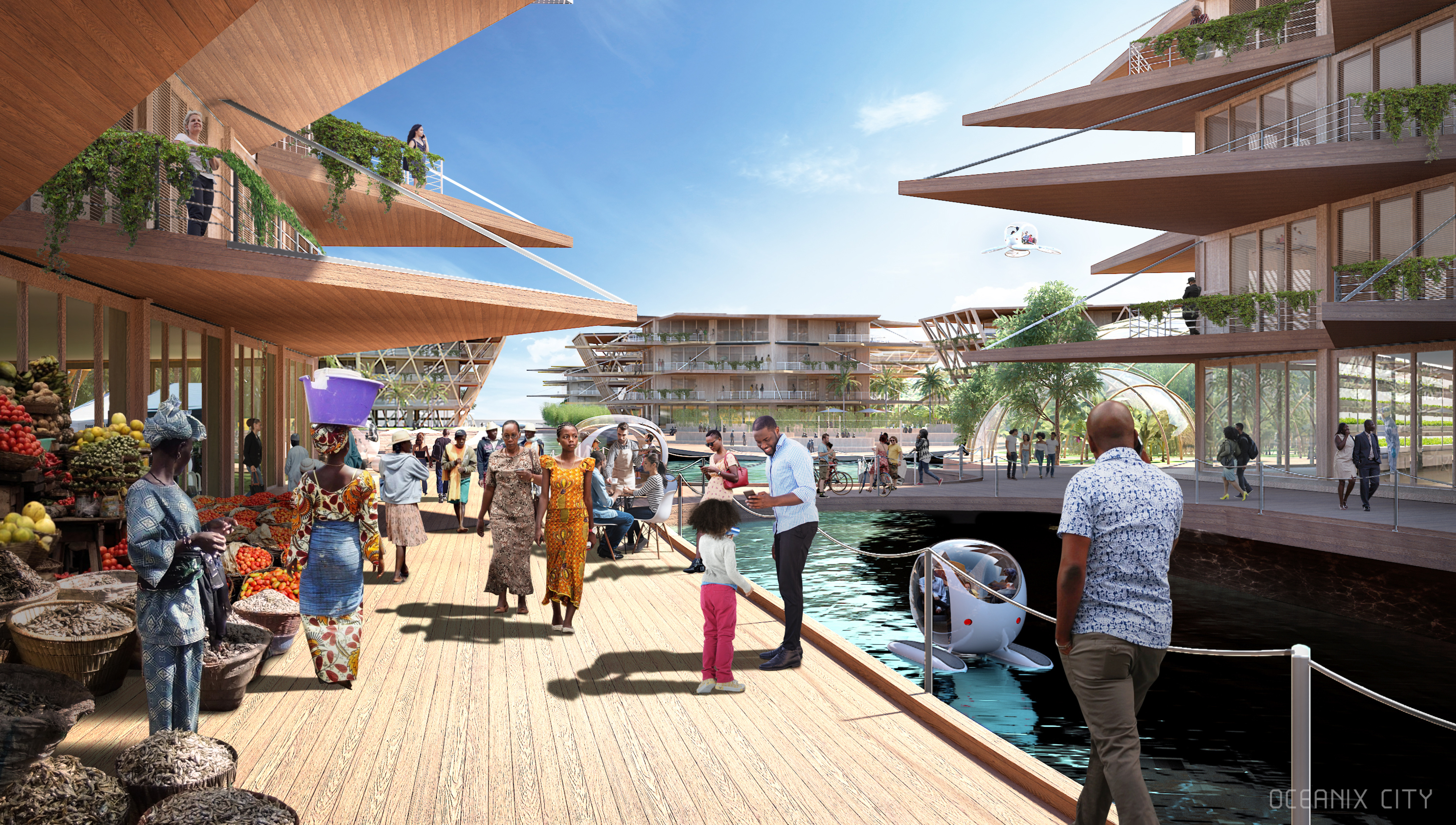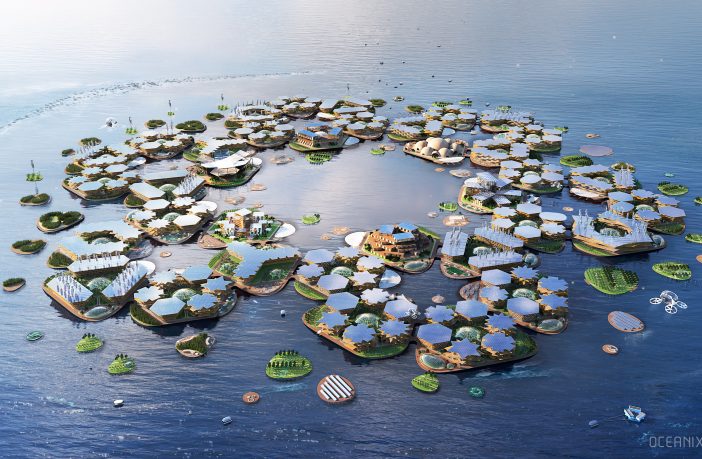- Rising sea levels has prompted the UN-Habitat to explore options for floating cities.
- The design of OCEANIX CITY, the world’s first sustainable floating city for 10 thousand residents, was unveiled in support of UN-Habitat’s New Urban Agenda.
- OCEANIX CITY is not only sustainable, but also flood-proof and designed to survive mega storms.
Earlier this month UN-Habitat (UN Human Settlements Program) met with a broad range of partners in the First UN High-level Roundtable on Sustainable Floating Cities. The goal of the meeting was to explore innovative solutions to the threat faced by coastal cities and countries due to rising sea levels.
The Roundtable, co-convened with OCEANIX, the MIT Center for Ocean Engineering and the Explorers Club, brought together innovators, explorers, marine engineers and scientists to the UN Headquarters to share cutting-edge ideas.

Pic: GREENHOUSE: Communal farming is the heart of each
neighborhood, allowing residents to embrace sharing culture and
zero waste systems. Residents grow their own food in daylit outdoor
farms. OCEANIX CITY
“We are the UN agency mandated to work with cities, be they on land or water. We are ready to engage in dialogue on Sustainable Floating Cities to ensure this burgeoning sector is mobilised to good effect and for the benefit of all people,” said Maimunah Mohd Sharif, the Executive Director of UN-Habitat and UN Under Secretary-General.
The Roundtable explored possible solutions to this looming catastrophe including selfsustaining floating cities, which produce their own food, energy, fresh water and zero waste. The design of OCEANIX CITY, the world’s first sustainable floating city for 10 thousand residents, was unveiled in support of UN-Habitat’s New Urban Agenda.
Marc Collins Chen, the co-Founder and CEO of OCEANIX said humans can live on floating cities in harmony with life below water.

Pic: NEIGHBORHOOD BOARDWALK- AFRICA: Residents gather, work
and play in an activated public realm. Diverse building terraces
provide indoor-outdoor living and encourage socializing with
neighbours. OCEANIX CITY
“It is not a question of one versus the other. The technology exists for us to live on water, without killing marine ecosystems,” he said. “It is our goal to make sure sustainable floating cities are affordable and available to all coastal areas in need. They should not become a privilege of the rich.”
OCEANIX CITY is not only sustainable, but also flood-proof and designed to survive mega storms. In the event of long-term major shift in weather patterns, the entire floating city can be unmoored and towed to a more suitable location.
Ninety percent of the world’s largest cities will be exposed to rising seas by 2050. The vast majority of coastal cities will be impacted by coastal erosion and flooding, displacing millions of people, while destroying homes and infrastructure. Find out more about the OCEANIX CITY
Author: Bryan Groenendaal











